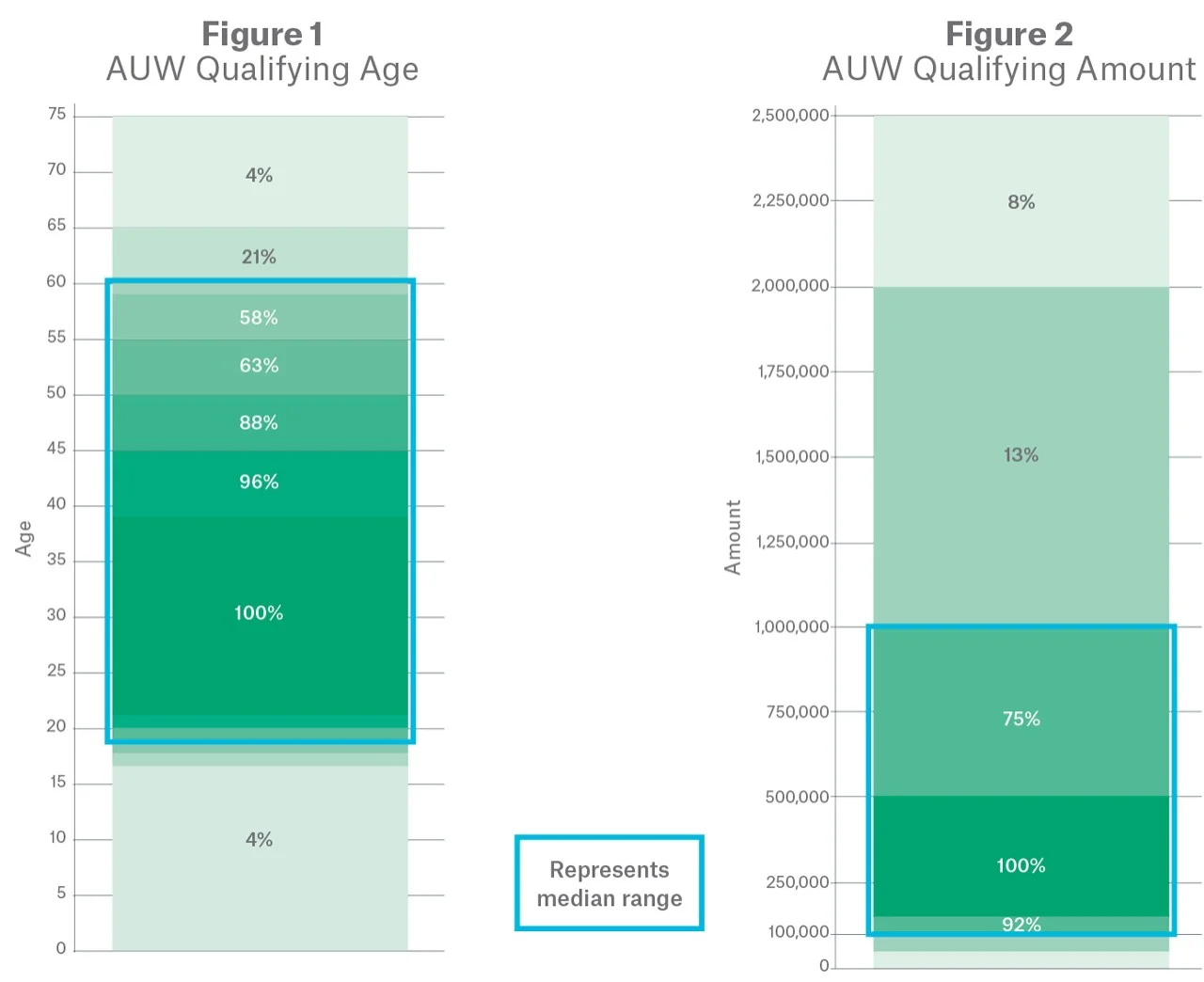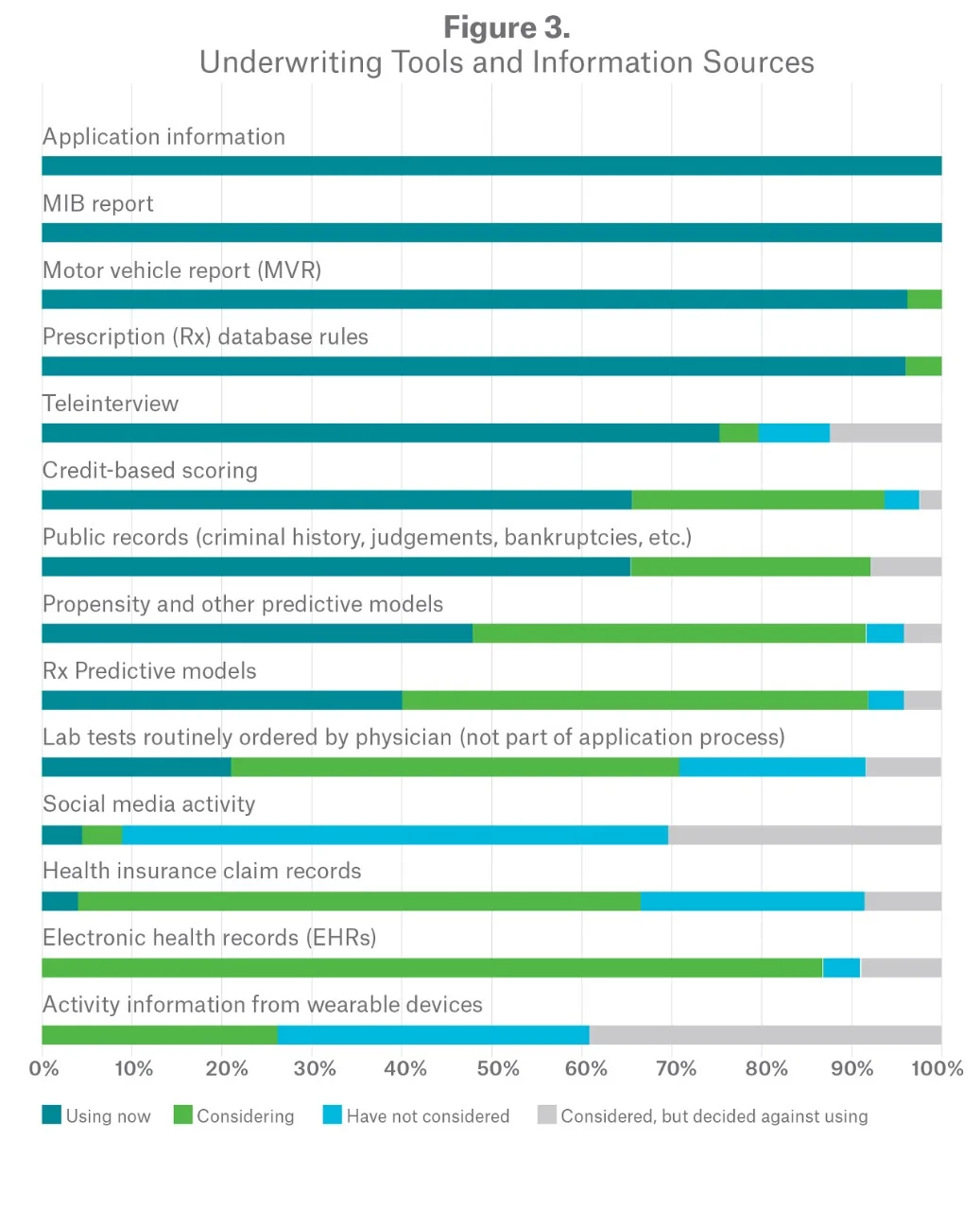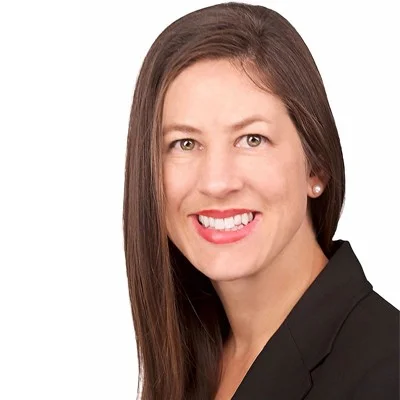
Accelerated Underwriting - The New Paradigm for Risk Selection
properties.trackTitle
properties.trackSubtitle
The individual life underwriting landscape is rapidly evolving. The wave of the Baby Boomers at or nearing retirement has created a market shift toward a new generation of prospective life insurance buyers. The growing Millennial target market is challenging carriers to explore new ways of selling and underwriting life insurance. The traditional method of applying for life insurance is quickly becoming the exception rather than the rule, as more and more companies strive to improve the customer experience and expand their applicant pool by offering a faster and less invasive approach to buying life insurance.
Munich Re Life US conducted an accelerated underwriting (AUW) survey at the end of 2018 with the goal of capturing new and emerging trends in the U.S. individual life accelerated underwriting market. Responses were received from 28 participating companies. While the term “accelerated underwriting” may have once resembled a simplified issue program, today’s AUW programs are looking more and more like fully underwritten programs without the medical exam and fluid collection process. Each company’s AUW program is unique in that it reflects their current stage of adoption and the maturity of their individual program. This article highlights emerging accelerated underwriting trends and shares some key survey findings.
Program parameters
Issue age and face amount are the primary factors used to determine AUW eligibility. The most commonly reported AUW eligible issue age range was 18-60 and the most common AUW eligible face amount offering was $100,000- $1,000,000, based on the median survey responses.
See Figure 1 below for a visual representation of the percentage of companies offering accelerated underwriting to applicants within each issue age band grouping. All responding companies reported offering AUW to applicants between issue ages 21-39, but we see a gradual drop off of companies starting at issue age 40, implying a notable variation in the maximum issue age limit. Many companies are continually reevaluating their accelerated underwriting programs through business analytics and expanding their age limits as they test and learn.

While the number of available risk classes offered through an accelerated program does not always mimic that of the company’s fully underwritten (FUW) program, the gap is quickly narrowing. When asked about the number of risk classes offered, over 60% of carriers reported offering the same number of non-tobacco AUW classes as FUW, while the remainder offered one to two fewer AUW classes. Although only two-thirds of companies allow tobacco users to go through their AUW program, almost all the programs that do are offering an equivalent number of AUW and FUW tobacco classes, with two being the norm. One-quarter of carriers report offering a substandard class to applicants through their current accelerated programs, but some indicated that this was limited only to a small number of cases with low to moderate table ratings and flat extras.
Despite the expectation (by over 70% of carriers) that accelerated underwriting mortality will be higher than pre-AUW mortality, the vast majority indicated that they kept AUW premium rates the
same as fully underwritten rates. There is often an expectation that the mortality difference can be partially or fully made up through expense savings from streamlined under-writing, lower acquisition costs and higher placement ratios. This may explain why companies are comfortable keeping premium rates the same as the fully underwritten business.
The industry trend in AUW is clearly towards including higher issue ages, face amounts, and more risk classes with the end goal of mimicking traditionally underwritten business and including additional customers in the faster, less invasive process. With proper product design, target marketing, distribution, underwriting risk assessment and pricing, we believe that this can be done successfully. This is important since AUW programs are no longer unique one-off programs, but are now table-stakes for most carriers, with many carriers having more than one product offering accelerated underwriting risk assessment.
Underwriting tools
Experience monitoring
Monitoring early accelerated underwriting experience could arguably be one of the most important things an insurer can to do to ensure the success of their AUW program. All companies who participated in the survey reported having some form of control in place, whether it be random holdouts, post-issue underwriting, or both.
A random holdout (RHO) process is a monitoring technique in which cases in the accelerated underwriting workflow are randomly selected to go through the traditional underwriting process. Just over 70% of carriers reported performing random holdouts in the AUW survey. A robust business analytics program is very important, with random holdouts a starting point. We commonly see RHO levels of 10% at product launch that are later adjusted up or down according to results.

Random holdouts provide information on the underwriting process, requirements, rules, and the overall quality of the business. They also serve to provide a sentinel effect for applicants and distribution. Targeted holdouts can be for specific underwriting criteria, such as diseases, occupations, etc., or used for selected distribution. Both random and targeted holdouts provide insight and value.
The carriers that choose not to perform random holdouts usually do so in an effort to ensure a positive applicant experience. One problem companies face with random holdouts is that applicants withdraw their applications at high rates when invasive underwriting requirements are requested. This could be because they view the additional underwriting request as “bait and switch,” or it may be because these applicants are under-reporting the degree of severity, or not disclosing health conditions, and therefore it is in their best interest to try applying elsewhere. Some companies have mitigated the effect of random holdouts by the way they market the accelerated underwriting program to their distribution and customers (e.g., indicating the applicant may be eligible for AUW as opposed to guaranteeing a fluid-less process). In a truly random holdout process with minimal applicant withdrawals, we would expect the underwriting results of the RHO group to indicate areas of focus for the insurer to refine their underwriting rules and/or pricing assumptions. A high withdrawal rate could skew that result.
Post-issue underwriting is a process where a subset of policies issued under accelerated underwriting is selected to go through additional underwriting review. Again, this process can be random, targeted, or both. This is less disruptive to the applicant experience, since this process occurs post-issue and typically without the applicant’s awareness. Over 70% of companies reported conducting post-issue underwriting, while several more companies reported plans to implement it within the next 12 months. The attending physician statement (APS) is the tool used most often in post-issue underwriting, followed by MIB Plan F, and prescription drug database rechecks. Since the APS is only one underwriting
requirement obtained through traditional underwriting, post-issue underwriting using only an APS may not identically match the fully underwritten decision, and therefore the true misclassification risk.
Interestingly, companies that perform both RHO and post-issue monitoring techniques are not necessarily finding similar results between these two methods. On average, random holdouts are reported to result in a higher rate of misclassified cases than post-issue underwriting, even within the same company. We saw the following results from the responding companies:
- RHOs result in the same risk class assignment 85% of the time, on average, while post-issue underwriting assigns the same risk class 90% of the time.
- From the RHO monitoring, the median tobacco misrepresentation rate was 1.5% of all non-tobacco cases. This compares to a 0.5% median tobacco misrepresentation rate from the post-issue audit results.
- Both RHOs and post-issue audits report median results of 1% of AUW cases that were found to be declines through the additional underwritten information.
This misclassification difference should not come as a surprise given the difference in additional information gathered in the RHO versus the post-issue underwriting analytics format.
Because credible AUW experience has yet to emerge, it is especially important for carriers to establish robust monitoring practices in order to stay ahead of the curve and properly manage their accelerated underwriting programs. Monitoring of leading indicators through random hold-out and post-issue underwriting can provide valuable insights into emerging accelerated underwriting experience. It is best practice to monitor mortality and lapse experience for accelerated underwriting programs separately from fully underwritten programs, so that any divergence from traditional underwriting experience can quickly be identified.
Looking ahead
It is evident that accelerated underwriting programs are rapidly evolving and will continue to do so for the foreseeable future. New insurance plans being offered, enhanced product designs, additional distribution channels, new vendor product offerings and data sources, and changes in underwriting requirements and processes are just a few of the moving pieces in AUW programs.
For these reasons, we believe the results of this survey represent a snapshot of the life insurance industry as it looks in late 2018 with regards to AUW programs. If the same survey were to be administered a year from now, we might expect many of the responses to be quite different. In particular, it will be interesting to follow how the industry reacts to emerging mortality and lapse experience as well as other market and regulatory developments.

